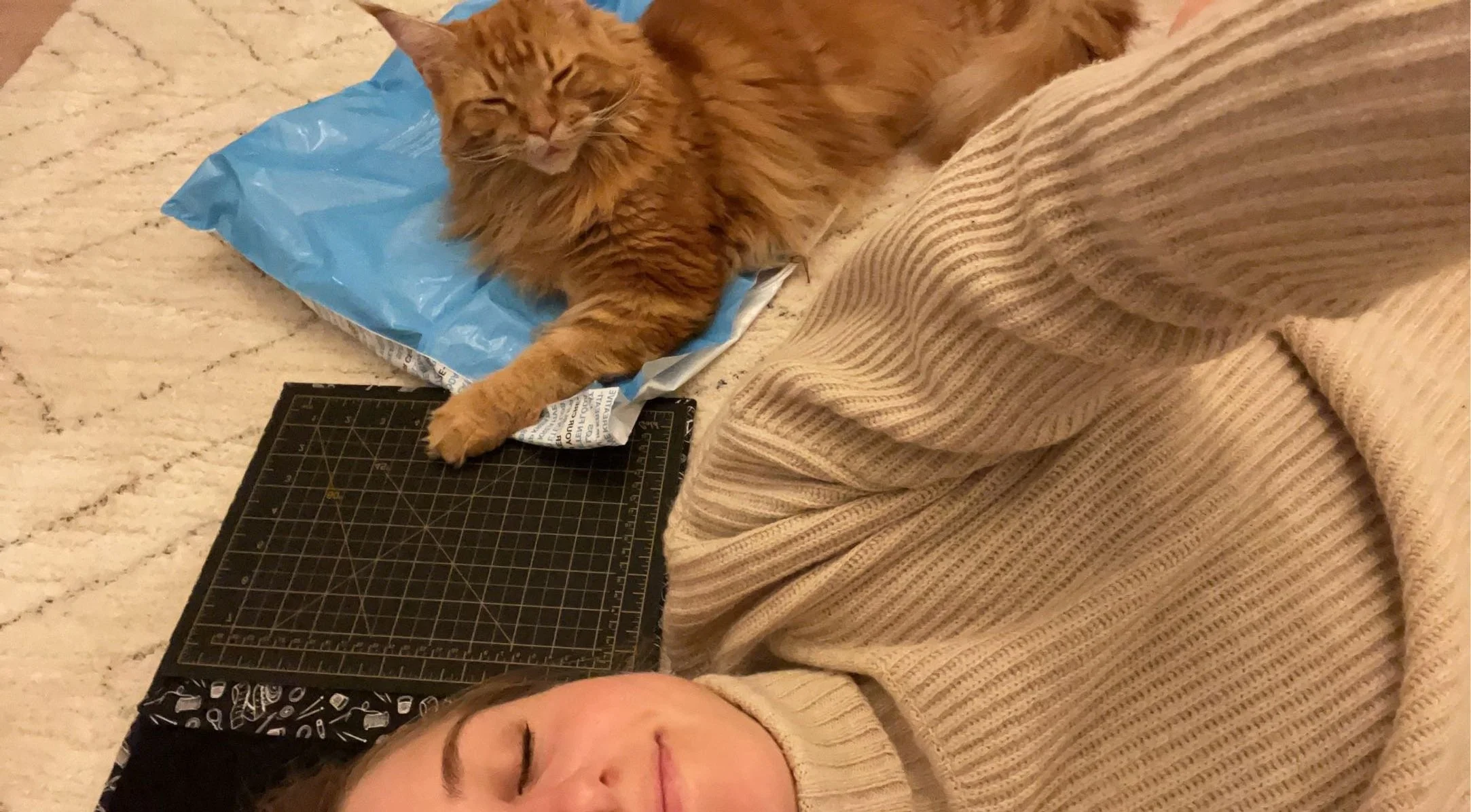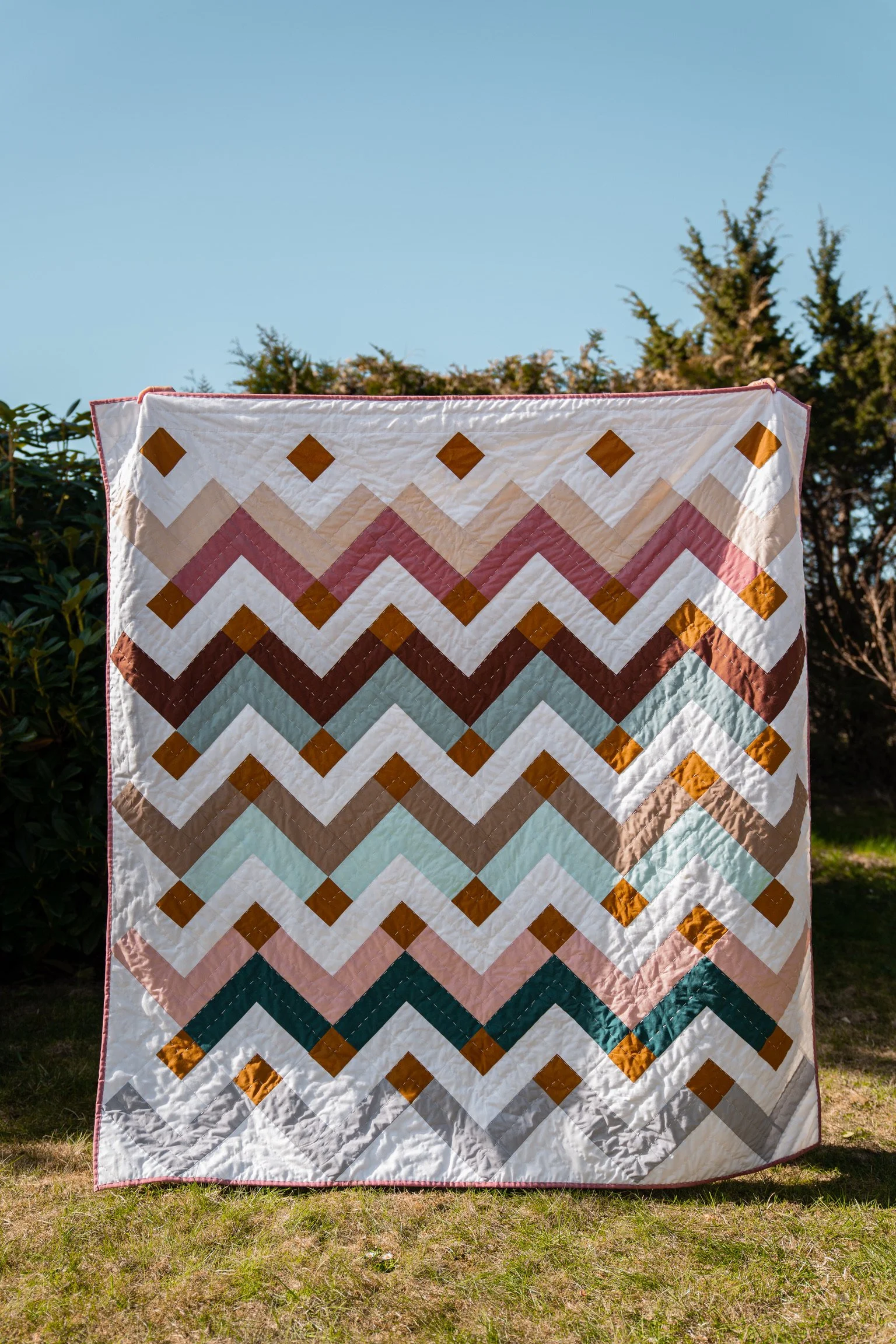Surviving Burnout: Finding Calm Through Quilting
Quilt No. 1Pattern: Thrive by Suzy Quilts
Materials: Cotton
Batting: Wool
Hand quilting: DMC size 8 pearl cottonThe Crash
At 27, I burned out.
It wasn’t sudden; it built quietly over time, a combination of work, pressure, and personal shifts that left me exhausted and untethered. Fatigue and memory loss crept in until I barely recognized myself. Eventually, I went on sick leave in October 2022, something I never thought I’d need.
Living in Norway meant I had the support to pause, but rest on its own didn’t come easily. I knew that doing nothing would make my thoughts spiral further. I needed something gentle yet structured, something that could hold my attention when my energy and focus couldn’t hold much else.
Returning to Making
Years earlier, I’d taken a fibers course in college and discovered embroidery — slow, deliberate, grounding. The rhythm of stitching had always brought me peace.
So, when I found myself adrift, I turned back to fabric and thread. But this time, I wanted to learn something new, something that challenged me just enough to pull me out of my head. Quilting seemed like a natural next step: familiar yet full of possibility.
Learning the Language of Fabric
I began with the Thrive quilt pattern by Suzy Quilts — bright, modern, geometric. It was labeled “beginner-friendly,” which felt reassuring. I ordered the same colors Suzy used, a small act of trust in someone else’s palette when my own decision-making felt cloudy.
The pattern came with a week-by-week quilt-along, so I followed it carefully. One week at a time, one block at a time. My cat, Leo, was an ever-present “assistant” — napping on fabric piles, testing the design wall’s stability, reminding me not to take the process too seriously.
It wasn’t about making something perfect. It was about making something.
A Space to Create
Our apartment at the time was small — a rental with limited space. I didn’t have a dedicated space, just a corner near a window and a portable design wall.
As pieces began to come together, I realized quilting was its own form of meditation. Measuring, cutting, pressing — all rhythmic, predictable, and somehow comforting. The act of making became a quiet resistance to burnout’s noise.
Material Choices and Mindful Hands
When it came time to quilt and assemble, I learned the importance of materials. I chose wool batting — natural, warm, and light — because it felt right for the kind of life I’m building here in Norway.
I decided to hand quilt. It was slower, but it matched the pace I needed. Each stitch marked time passing — patient and forgiving.
Imperfection and the Joy of Learning
Of course, there were mistakes. I attached the binding backward, meaning my hand stitches showed on the front instead of the back. But by then, I didn’t mind. The “wrong” side became its own kind of signature — a quiet reminder that progress matters more than perfection.
Finishing that first quilt wasn’t just about the object. It was about proving to myself that I could move forward again, piece by piece.
Rebuilding Through Craft
Quilting didn’t fix burnout — but it gave me space to heal. It offered structure when everything else felt unsteady, and calm where there had been noise.
Making became a way to reconnect with design, with process, and with myself. The studio that grew from that moment — Everdell — is rooted in that same philosophy: that craft can be both creative and restorative, modern and mindful.
Sometimes, the smallest stitches hold the greatest strength.



